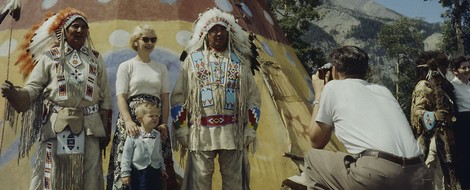Your podcast discovery platform
Curious minds select the most fascinating podcasts from around the world. Discover hand-piqd audio recommendations on your favorite topics.

piqer for: Climate and Environment
Pamela works as a Press & Communications Manager for an international NGO (IWGIA) defending indigenous peoples' rights. She holds an Erasmus Mundus MA in Journalism, Media & Globalisation from Hamburg and Aarhus University and an MA in Political Science from the University of Buenos Aires. She will be putting the eye on international media coverage of indigenous communities and their demands.
The Untold Story About National Parks And Indigenous Peoples In Canada
You may have heard that Canada is celebrating its 150th anniversary. To mark the date, the government gave free admission to national all parks, increasing visitors up to 10% in the last 7 months. What these 14 million visitors (local and international) may not be aware of are the controversies they were literally standing on.
National Post describes it as a “shady and tarnished past” of Parks in a very well written retrospective about Canada’s relationship with indigenous communities.
Indigenous peoples, especially the Stoney Nakoda First Nations, have a lot to say about their relationship to the Canadian parks. In 1887 the Stoney were evicted from their lands to build what is now the oldest and well-known Banff National Park.
Journalist Graeme Hamilton compiles revealing data of a pattern of forced evictions in the construction of national parks, which is backed up with different indigenous sources and public statements.
The article also provides a solid image of how the Canadian government has tried to amend previous unjust policies against indigenous populations:
“In fact, nearly 90 per cent of Canada’s national parks are managed in accordance with treaties or agreement with Indigenous peoples. Areas designated to become national parks, such as Thaidene Nene in the Northwest Territories, are first set aside as national park reserves pending negotiations with Indigenous peoples who have a claim to the land”.
Hamilton also applies an eye-opening constructive journalism approach, that portrays indigenous peoples as active stakeholders able to lead resource management plans and not as victims of a discriminatory policy.
This piece allows a better understanding of the reconciliation process in Canada and the controversial intersections between land rights, tourism, and ecosystem management:
"Some of them talk about being jewels in the crown of Canada, and yet they have this history that tells about another side of Canada — a history of colonialism and dispossession."
